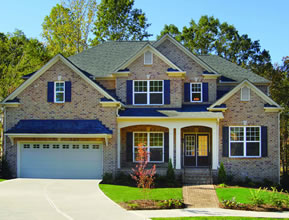Newer Home vs Older Home
Newer Home
The main advantage to an older home is that Mother Nature has already inflicted the majority of her damage upon your house, and additional damage probably won’t occur unless major rainfall, flood, or seismic activity occurs, or unless you alter the landscaping or remodel the structure itself. The home is comfortable in it setting. It has generally stopped moving and adjusting. What you see is what you get. Unfortunately, you typically don’t get to create your own damage or watch it happen naturally, and there are no fond memories associated with the damage that is there.
We typically define a newer home as one that is less than ten years old. An older home, of course, is defined as one that is more than ten years old.
Older Home
The main advantage to a newer home is that there is less damage, both from Mother Nature and from previous occupants. You typically get to create your own damage or watch it happen naturally. The main disadvantage to a newer home is that you do not know what kind of damage Mother Nature and other forces are going to inflict upon your house. The house and its structure are still adjusting and moving, and trying to get comfortable in its setting. What you see may not be what you get some years down the road.
The Actions of Nature and settlement-
When a house is being built, the ground is graded and tentatively landscaped. Regular rainfall throughout the year would help our houses settle gradually. This means that if you move into your house in December, you may not see any settlement activity (typically known as common wall and ceiling cracks) until the first major rainfall comes the following spring, or even later after prolonged periods of drought. Then, all of a sudden, settlement damage occurs after the first rains. You might even consider it major settlement damage, even when it is common settlement damage, simply because it has happened to your house. Your beautiful new home is now a wreck and collapsing around you as you sleep. This is not necessarily so.
If the house is a newer home, you might notice hairline cracks develop at both interior and exterior locations, particularly at door and window corners, and typically in a diagonal manner. Usually these are common stucco and drywall cracks. Sometimes these cracks will follow the drywall seams, forming perfectly straight lines and 90° corners. When they follow drywall seams, they can appear anywhere, depending on the quality of the workmanship: how well the drywall sections were fitted together, whether or not seam tape was used, the quality of the seam tape, the type of nails or screws used to secure the drywall, the number of screws or nails used to secure the drywall, and the quality and thickness of the ceiling or wall texture. Ceiling and wall texturing, and painting, prevent home inspectors from inspecting workmanship to determine why drywall seam cracks appear.
If the house is more than ten years old, most settlement activity probably, but not necessarily, has already occurred simply because it probably has been through several years of good rainfall. This presumes many things in the older home though, such as:
– The house having been well maintained by previous homeowners; – Fully functional gutters and downspouts in place; – Grading and drainage directing water away from the foundation; – Vegetation, which has not been allowed to grow too close to the foundation; – Any leaks in the roof, plumbing, or drainage systems, as well as any damage from those leaks, having been repaired immediately to prevent additional damage, which sometimes might be concealed in the walls or ceiling.
These are a lot of presumptions, and typically not all of them are valid for any property. Any type of renovation or remodeling of any section of an older home is going to uncover problems or defects that will not be noted in an inspection report, typically because they could not be seen or detected, especially in a furnished structure. Knowing this, you should budget appropriately for unexpected and unforeseen circumstances during any remodeling.


